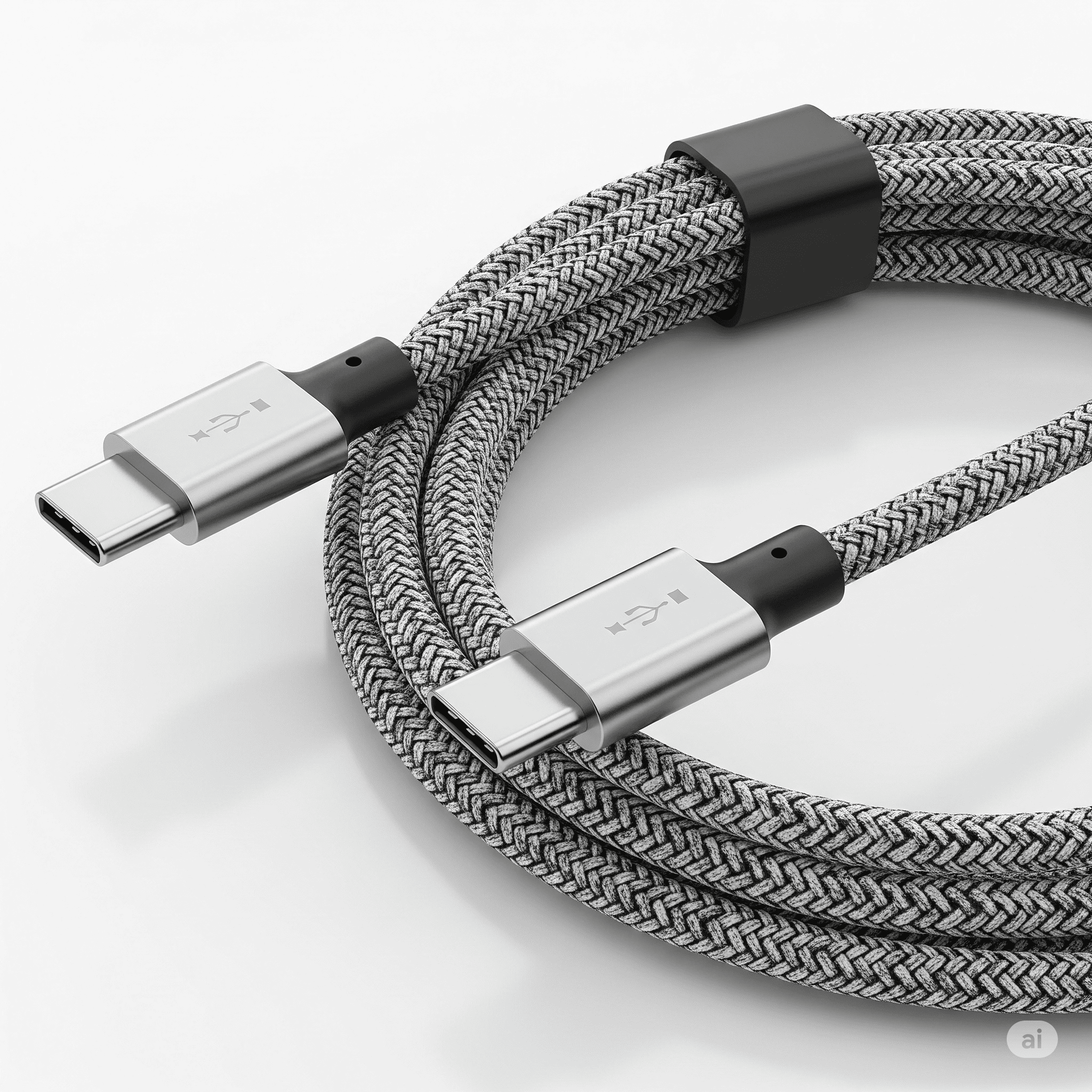Kingsgrove Branch:
USB C Cable

USB C cable, the ubiquitous connectors of our digital age, have revolutionized how we charge and transfer data. From the initial design to the myriad applications and future possibilities, this exploration delves into the intricate world of USB-C cables, examining their history, performance, materials, and the practicalities of choosing the right one for your needs
This comprehensive guide covers everything from the basic features and specifications of various USB-C cable types to the nuanced considerations of performance metrics, cable materials, and practical troubleshooting. We'll also touch on the future of this technology, examining its potential evolution and impact on various industries
A Comprehensive Overview of USB-C Cables
USB-C cables have revolutionized how we connect devices. From laptops to smartphones, these cables have become essential for data transfer, charging, and more. This overview delves into their history, features, and diverse applications
History and Evolution of USB-C Cables
USB-C cables emerged as a significant upgrade to older connector types. Their reversible design eliminates the need to align the cable, simplifying connections. The evolution has focused on faster data transfer speeds, higher power delivery capabilities, and improved durability
Key Features and Specifications of Different USB-C Cable Types
Various USB-C cable types exist, each tailored for specific needs. Understanding these distinctions is crucial for choosing the right cable. Key differences include data transfer rates, power delivery ratings, and physical characteristics
- USB-C to USB-C: Often used for data transfer and charging between compatible devices
- USB-C to Thunderbolt: Enables high-speed data transfer and video output
- USB-C to DisplayPort: Supports high-resolution video output for external displays
- USB-C to HDMI: Transmits video and audio signals to HDMI-compatible displays
Connector Types and Compatibility
The USB-C connector's design is crucial for compatibility. Different connector types have distinct implications for data transfer, power delivery, and video output. Mismatched connectors can lead to incompatibility issues
Cable Lengths and Gauges
Cable length and gauge significantly affect performance. Longer cables often experience signal degradation, while thinner gauges may struggle with higher data transfer rates. Choosing the appropriate length and gauge is vital for optimal performance
Diverse Applications of USB-C Cables
USB-C cables extend far beyond basic data transfer and charging. They enable seamless connectivity for a wide range of devices and tasks, including:
- Data Transfer: Efficiently transferring files between computers and other devices
- Charging: Rapidly charging laptops, smartphones, and other devices
- Display Output: Connecting to external displays for larger screens
- Peripheral Connectivity: Connecting peripherals like external hard drives and cameras
- Professional Use: Supporting professional applications requiring high data transfer speeds, such as video editing and graphic design
Performance Evaluation of USB-C Cables
Assessing USB-C cable performance is crucial for informed purchasing decisions. This section details the metrics used for evaluating performance, highlighting factors that influence quality
Performance Metrics
Key metrics include data transfer rates (measured in Gbps), charging speeds (measured in watts), and power delivery capabilities (measured in watts). These metrics provide a quantitative measure of the cable's efficiency
Manufacturer Comparisons
Different manufacturers offer varying performance levels. Comparing performance benchmarks helps consumers identify reliable and high-performing cables. Reviews and testing results can offer insights
Influencing Factors
Cable material, shielding, and connector design play significant roles in performance. Robust shielding protects against signal interference, while high-quality materials ensure durability and longevity
Limitations and Drawbacks
Certain USB-C cable designs might have limitations. These can include potential signal degradation over long distances or issues with power delivery in specific scenarios. Careful consideration is needed
Impact of Cable Length on Performance
Cable length significantly impacts USB-C cable performance. Longer cables often experience signal degradation, leading to slower data transfer speeds and reduced charging efficiency. This is especially true for higher data transfer rates. Signal integrity decreases as the distance increases. Choosing a cable length appropriate for the task is essential
A Comparative Analysis of USB-C Cable Materials
Different cable materials offer varying degrees of durability, flexibility, and environmental impact. A comparative analysis helps in informed selection
Material Comparison
Less durable than braided options
Slightly more expensive, slightly less flexible
May not be as durable or environmentally friendly as other options
| Pros | |
|---|---|
| Affordable, relatively flexible | |
| Increased durability, better tensile strength | |
| Various properties depending on the material |
Durability and Longevity
The durability of the cable material directly impacts its longevity. More robust materials, like braided nylon, generally offer a longer lifespan. Material quality influences the cable's ability to withstand daily use, see USB-C to HDMI
Influence on Flexibility and Robustness
Material selection significantly affects flexibility and robustness. Flexibility is important for maneuverability, while tensile strength ensures the cable can withstand bending and pulling. The material must withstand everyday use
Environmental Impact
The environmental impact of different materials varies. Consider the sourcing and disposal of the material when making a purchase. Prioritize sustainable materials to minimize environmental footprint
Practical Considerations for Choosing USB-C Cables
Choosing the right USB-C cable involves careful consideration of various factors. This section provides a practical guide for selecting an ideal cable
Factors to Consider
Budget, compatibility, and performance requirements are crucial. Balancing these factors helps ensure a suitable cable choice. Consider how you'll use the cable daily
USB-C cables are pretty handy, right? They're becoming the standard for a lot of devices, but sometimes you need more. If you're trying to connect something that uses HDMI, like a gaming console or a high-definition monitor, you might need an adapter, like an HDMI to USB-C converter. Check out this article about HDMI to USB-C to see how they work and what to look for
No matter what, USB-C cables are a great way to streamline your tech setup
Pricing Tiers and Trade-offs
Different pricing tiers exist for USB-C cables, each with associated trade-offs. Higher-priced cables often offer superior performance and durability
Cable Suitability for Devices
| Suitable Cable Type |
|---|
| USB-C to USB-C, USB-C to Thunderbolt |
| USB-C to USB-C |
| USB-C to USB-C |
Importance of Cable Quality
Cable quality directly impacts device performance and longevity. High-quality cables ensure stable connections and prevent damage to devices. The better the cable, the better the connection
Troubleshooting USB-C Cable Issues
Troubleshooting common USB-C cable problems is essential. This section offers guidance on resolving various issues
Common Problems
Connection issues, slow data transfer rates, and charging problems are common. Understanding the root cause is crucial for effective troubleshooting
Troubleshooting Steps
Troubleshooting steps include checking connections, verifying device settings, and assessing cable integrity. Cable connections must be secure
USB-C cables are a game-changer, offering speed and versatility. Choosing the right USB-C charger is crucial for optimal performance, as you need a charger that effectively supports your cable. Check out this helpful guide on USB-C chargers for tips on picking the perfect match. Ultimately, the right cable and charger combo ensures a smooth, efficient experience, leaving you ready to go with your USB-C setup.
Potential Causes and Solutions
Replace cable, check connector
Ensure tight connection, check cable
| Potential Cause | |
|---|---|
| Damaged cable, faulty connector | |
| Loose connection, faulty cable |
Importance of Proper Handling and Storage
Proper handling and storage techniques can significantly extend a USB-C cable's lifespan. Avoid excessive bending and sharp objects. Store cables in a safe, organized manner
Future Trends in USB-C Cable Technology
Future USB-C cable technology promises enhanced performance and new applications. This section explores emerging trends
Emerging Trends
Higher data transfer rates, faster charging speeds, and enhanced power delivery capabilities are expected. New materials and designs are under development
Potential Applications and Advancements
New applications and advancements are anticipated. Increased use in industrial and automotive sectors is possible
Potential Materials and Designs
New materials and designs could enhance performance. Flexible cables, more durable materials, and improved shielding could be key developments
Impact on Existing Devices and Standards
Future trends will likely impact existing devices and standards. Upgrades and compatibility with existing infrastructure will be necessary. Existing standards may need to adapt to the new technologies
USB-C Cable Article Structure for 1500+ Words: Usb C Cable
This section Artikels the structure of a comprehensive article on USB-C cables
Detailed Table of Contents
A detailed table of contents will be included. A comprehensive list of sections and sub-sections will be provided. The content will be organized logically
Logical Flow of Information, Usb c cable
The article will maintain a clear and logical flow. A structured approach will ensure coherence and clarity.
Example Introduction
The introduction will set the context for the entire article. It will provide a compelling overview
Example Conclusion
The conclusion will summarize key takeaways and offer a future outlook. A concluding statement will be provided
Final Wrap-Up
In conclusion, USB-C cables have transcended their initial purpose, evolving into indispensable tools for our digital lives. Understanding their history, performance, material considerations, and practical applications is crucial for making informed choices. Whether you're a seasoned tech enthusiast or a curious beginner, this guide provides the knowledge and insights necessary to navigate the world of USB-C cables with confidence
Quick FAQs
What are the different types of USB-C connectors?
USB-C connectors come in various forms, each designed for specific applications and compatibility. Some are optimized for high-speed data transfer, while others are focused on higher-power charging. Understanding these differences is key to ensuring compatibility with your devices
How do I choose the right USB-C cable length?
Cable length is crucial, especially for mobility. Consider the distance between your device and the power source. Shorter cables are more convenient, but longer cables offer greater flexibility for positioning. Also consider the intended use case; a cable for a desktop setup will have different length needs compared to a portable one
Can I use a USB-C cable for all USB-C devices?
Not all USB-C cables are created equal. Some are optimized for data transfer, while others prioritize high-power charging. Always check the specifications of the cable and the device to ensure compatibility
What are some common problems with USB-C cables?
Common issues include loose connections, slow data transfer rates, and charging problems. These can often be resolved by checking the connections, ensuring compatibility, and, if necessary, replacing the cable
Recent posts

Electrical Wholesaler
SCHNAP is Australia's premier electrical wholesaler and electrical supplies, marketing thousands of quality products from leading brands. Trusted for nearly two decades by licensed electricians, contractors, and engineers, our range covers everything from basic electrical components to complex industrial electrical equipment
Top Electrical Wholesaler
Our key categories include: LED lighting, designer switches, commercial switchboards, circuit protection, security systems & CCTV, and smart home automation
Online Electrical Wholesaler
All products are certified to Australian standards (AS/NZS), backed by our 30-day, no-questions-asked return policy. Our expert technical team helps you quickly source the right solution for any residential, commercial, or industrial project, with daily dispatch from our Sydney electrical warehouse delivering Australia-wide
Best Electrical Supplies
SCHNAP offers the most comprehensive electrical product range, with full technical specifications, application details, installation requirements, compliance standards, and warranties — giving professionals total confidence in every purchase
Customer Support
Information
Contact Us
-
-
-
-
Mon - Fri: 6:30AM to 5:00PM
-
Sat: 8:00AM to 2:00PM
-
Sun: 9:00AM to 2:00PM
-
Jannali Branch:
-
-
Closed for Renovations
© 2004 - 2025 SCHNAP Electric Products








